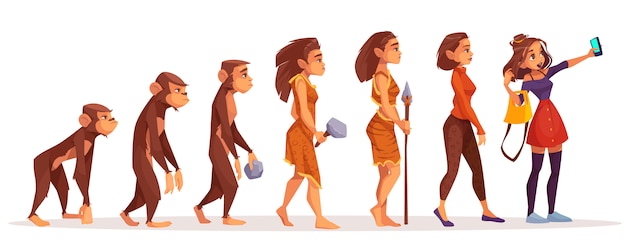Fascinating Facts about Evolution

Evolution is the incredible journey of life unfolding over millions of years.
The theory of evolution provides a framework for understanding how species change and adapt.
Natural selection is the driving force behind evolution, where organisms with advantageous traits survive and reproduce.
Evolution is an ongoing process, with new species constantly emerging and old ones disappearing.
Fossil records provide important evidence of species that lived in the past and their evolutionary history.
Human beings share a common ancestor with chimpanzees, showing our evolutionary connection.
Evolution doesn’t have a goal or purpose; it is simply a result of environmental pressures and genetic variation.
The process of evolution can be slow and gradual or fast and episodic, depending on the circumstances.
Scientists study the DNA of different species to understand their evolutionary relationships.
Evolutionary adaptations can lead to remarkable diversification, such as the variety of beak shapes in Darwin’s finches.
Evolution has enabled organisms to adapt to extreme environments, from deep-sea creatures to desert dwellers.
Our understanding of evolution has grown significantly since the publication of Charles Darwin’s On the Origin of Species in 1859.
The human appendix is considered a vestigial organ, indicating our evolutionary history of a plant-based diet.
The study of embryology provides insights into the evolutionary relationships between different species.
Fascinating Facts about Evolution part 2
Evolutionary processes can lead to convergent evolution, where unrelated species develop similar traits in response to similar environments.
Evolutionary biologists use comparative anatomy to identify structural similarities and differences between species.
The ability of some bacteria to develop resistance to antibiotics is a clear example of evolution in action.
The process of speciation occurs when populations of a species become reproductively isolated and eventually form new species.
Evolution is supported by a vast body of evidence, including paleontology, genetics, and comparative biology.
The discovery of Tiktaalik, an ancient fish with limb-like fins, provides a missing link between fish and land-dwelling animals.
The study of transitional fossils helps fill in the gaps in our understanding of evolutionary history.
Evolutionary theory is not in conflict with religious beliefs; many religious individuals accept and embrace it.
The concept of genetic drift recognizes that random events can have a significant impact on the evolution of species.
The evolution of flight in birds and bats showcases how different organisms can independently develop similar adaptations.
Evolutionary psychology explores how our behaviors and cognitive abilities have evolved over time.
The Galapagos Islands played a pivotal role in Darwin’s understanding of evolution, showcasing unique species adaptations.
Evolutionary medicine looks at how understanding evolutionary history can help us better understand and treat human diseases.
The process of sexual selection, where certain traits are favored for reproduction, has contributed to the evolution of elaborate displays in many species.
The phenomenon of convergent evolution is why we find similar body structures among diverse species like dolphins and sharks.
The evolution of the eye demonstrates the power of natural selection to develop complex and efficient organs.
The study of DNA sequences allows us to construct evolutionary trees and understand the relatedness of different species.
Evolutionary changes can occur at different scales, from small-scale adaptations to large-scale speciation events.
The presence of homologous structures in different species provides evidence of a common ancestor.
Evolution is not a linear progression, but rather a branching tree of life with many interconnected branches.
The evolution of flowers played a crucial role in the diversification of plants and their ability to attract pollinators.
Evolutionary biologists can reconstruct past environments and ecologies based on the fossils they find.
The concept of coevolution explains how organisms can influence each other’s evolution through their interactions.
The concept of mimicry shows how certain species can evolve to resemble other species as a survival strategy.
The evolution of antibiotic resistance in bacteria highlights the need for responsible use of antibiotics to prevent further resistance.
Genetic mutations are the raw material for evolutionary change, providing new variations for natural selection to act upon.
The study of epigenetics reveals how environmental factors can influence gene expression and potentially impact evolution.
The study of the peppered moth’s color change during the Industrial Revolution is a classic example of natural selection in action.
The evolution of the human brain has been a driving force behind our ability to innovate and adapt to changing environments.
The field of evolutionary developmental biology, or evo-devo, explores the genetic mechanisms that shape the development of organisms.
Understanding evolution helps us appreciate the interconnectedness of all living beings and our shared history on this planet.